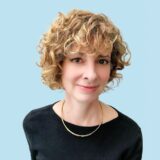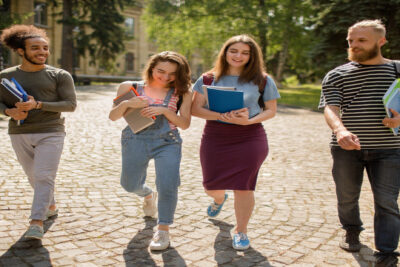Four critical, but often-missing, components of high-performing university websites
As a former university Chief Marketing Officer that led four website redesigns in the span of eight years, I know that websites are a tough—but critical—piece of the enrollment strategy to get right. Now, to help our Adult Learner Recruitment partners uncover potential pitfalls on their university websites and better support prospective students, I secret shopped over a dozen universities’ graduate program pages. I was alarmed to find that many enrollment-critical pages lacked the underlying content students most rely on to find programs and determine whether they want to apply to an institution, like admissions, academics, and financial aid.
Your website’s content and user-experience might seem like a small piece of the puzzle, but nearly all graduate and adult prospects consult program websites when considering where to apply. And for the 80% of graduate applicants reported as stealth, these enrollment-critical pages are serving as the only point of contact with an institution before applying, making your website one of hardest working members of your enrollment team.
Websites Significantly Impact Students' Program Choice
94%
of adult learners make a point to visit websites of all schools they're considering84%
of adult learners say a bad website negatively affects their opinion of your school72%
of adult learners abandon your website if it's not user-friendlyThrough my secret shopping, I identified several key elements that institutions need to address:
Findability: Will students find your programs through Google or other search engines?
Difficulty finding university webpages is the largest problem area I identified in my website scan and should be the highest priority for university leaders to address. Today, a staggering 92% of internet traffic is driven by Google, which undeniably serves as the gatekeeper of your digital traffic. Most schools are only findable when you use their name in a “branded” search (e.g.“ABC University Masters in Social Work”), but do not appear when searching for a just the program (“Masters in Social Work”), or the “informational” searches students use earlier on in their search (such as, “What can I do with a Masters in Social Work?” or “Best Masters in Social Work Near Me”).
To overcome the findability nightmare and appear in search results for high-traffic keywords, institutions must embed SEO-optimized content and keywords that address the high-volume informational and the transactional searches prospects are using at the beginning of their search in program pages. Below, explore some examples of the kinds of information students are searching for and that should be embedded in your pages.
Types of Information to Embed on Enrollment-Critical Pages

Navigability: Can prospective students easily find programs of interest on your website?
As part of my secret shopping, I scanned dozens of .edu’s program finder pages (think pages that serve as a “directory” of a university’s undergraduate and graduate programs). These are often one of the top five most visited pages on a university website, and for good reason—a list of programs offered is one of the most sought-after information on a school’s website.

The best program finder page I came across organized programs in alphabetical order by degree level and modality, with descriptive links to program pages so students could easily scan and access the content most relevant to them. This is a much more user-friendly approach than nesting programs under a college or school, which puts the burden on prospects to learn your websites’ organizational structure, bespoke school names, rather than exploring the programs available across the institution.
Informative: Can prospects easily find key information on tuition, financial aid, and application steps and requirements?
Of the dozens of sites I scanned, most were not elevating high-priority content on enrollment-critical pages. We know from our survey of graduate and adult learners that prospective students need to easily find the programs they care about (52% of prospective students seek this information) and then find information on those programs’ admissions requirements, tuition and cost, financial aid and scholarships, and outcomes without having to scan multiple pages or sites.
From our work helping dozens of institutions optimize their websites, we know that most university websites keep program-specific information on program pages and admissions-specific information on admissions pages. Because these sites are not organized with a user’s journey through the website in mind, the onus is on prospects to wade through countless pages to find the information they seek. Instead, treat program pages like a one-stop-shop for all the critical information a prospect would need. Ask yourself: can a student find all the information they would need to decide if a program is right for them if they typically spend less than 3 minutes on your .edu site?
Lead Capture Engine: Do key pages serve as lead capture engines, essentially “de-stealthing” prospects?
In my scan, I found that most program pages and other high-traffic, enrollment-critical pages are not working hard enough to “de-stealth” prospects to their site. Most of the sites I reviewed are using passive “request information” forms that offer no value exchange or incentive for prospective students to complete them, let alone provide an email address. This perpetuates high stealth rates by not giving site visitors a reason to engage.
While .edu’s have the potential to provide relevant and desirable content to site visitors like eBooks or brochures highlighting program outcomes, career trends in the field, and/or alumni stories, very few take advantage of this opportunity. By reviewing your own program webpages and comparing them against this list, you may be able to efficiently update your website (and maximize its enrollment impact) without doing a full redesign.

More Blogs

What enrollment leaders can learn from Alabama’s statewide direct admissions program

Is your yield rate okay?

AI visibility is critical when competing for student enrollments
Great to see you today! What can I do for you?